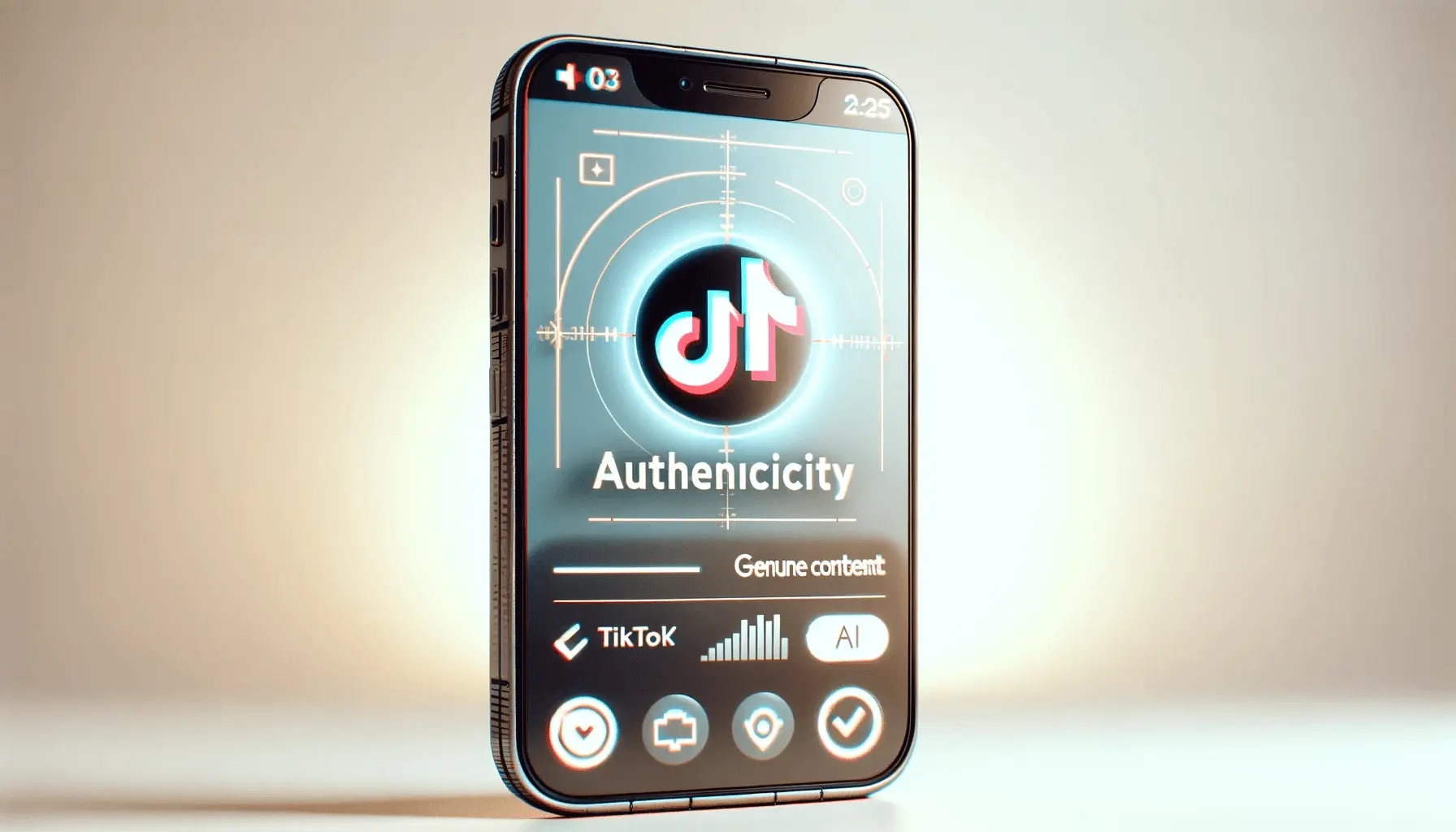The core of awareness ads lies in creating compelling messages.
In the rapid digital environment, grabbing the attention of your audience can only be achieved through a balanced mix of creativity and understanding.
Awareness ads aren’t about selling a product or service but rather telling a story that truly resonates with your audience on a personal level.
This article explores the importance of compelling messages in awareness ads and provides insights into creating impactful campaigns that leave a lasting impression.
Let’s begin by examining why crafting compelling messages is crucial for awareness ads and how it can set your brand apart in a crowded marketplace.
- Why Compelling Messages Are Crucial for Awareness Ads
- Understanding Your Audience to Craft Compelling Messages
- 3 Tips to Craft Attention-Grabbing Messages
- How to Optimize Google Ads for Compelling Messaging
- Measuring the Impact of Compelling Messages in Awareness Ads
- Putting It All Together: Writing Effective Messages for Awareness Ads
- Frequently Asked Questions About Crafting Compelling Messages for Awareness Ads
Why Compelling Messages Are Crucial for Awareness Ads
When it comes to awareness ads, the message is everything.
It’s not just about showcasing what you offer—it’s about connecting with your audience on an emotional level and ensuring your brand stays top-of-mind.
Compelling messages have the power to evoke emotions, build trust, and create a memorable brand identity that resonates long after the ad is seen.

Emotions are central to advertising, creating connections through vibrant designs and relatable storytelling.
The Role of Emotions in Advertising
Emotions play a vital role in advertising.
People tend to remember how an ad made them feel more than the specifics of the product or service.
By tapping into emotions such as joy, nostalgia, or even curiosity, you can craft a compelling message that leaves a lasting impact.
Think of ads that made you laugh or touched your heart—those are the ones you remember, right?
- Use relatable scenarios to evoke empathy.
- Incorporate storytelling to build emotional connections.
- Leverage visuals and music to amplify the emotional tone.

Awareness ads play a key role in increasing brand recognition in urban environments by engaging consumers through digital platforms.
How Awareness Ads Drive Brand Recognition
Awareness ads are the first step in your audience’s journey to discovering your brand.
A compelling message ensures they not only notice your ad but also remember your brand.
Effective messaging highlights your unique value and positions your brand as a leader in its space.
- Focus on clear and consistent branding.
- Highlight your brand’s unique voice and mission.
- Reinforce brand elements like logos and taglines within the message.

The key difference between awareness and conversion ads lies in their focus—emotional connection versus immediate action.
Key Differences Between Awareness and Conversion Ads
While awareness ads aim to grab attention and build recognition, conversion ads focus on driving immediate actions like purchases or sign-ups.
Compelling messages tailored for awareness prioritize emotional appeal and long-term impact over short-term gains.
- Awareness Ads Focus On: Storytelling.
- Conversion Ads Focus On: Urgency.
- Messaging in Awareness Ads Often Uses: Broad appeals.
- Messaging in Conversion Ads Uses: Direct calls-to-action.
- Metrics for Awareness Ads Often Include: Reach and engagement rather than immediate ROI.
Through knowledge of these foundational aspects, you can ensure that your awareness ad campaigns hit the right notes with your audience, drawing them in and leaving a lasting impression.
Compelling messages create a strong emotional connection, making your brand memorable and fostering trust with your audience.

Understanding your audience through research and persona development is key to crafting messages that resonate.
Understanding Your Audience to Craft Compelling Messages
Creating compelling messages for awareness ads begins with a deep understanding of your audience.
By knowing who they are, what they value, and how they think, you can tailor your messages to resonate and engage effectively.
Crafting such messages not only captures attention but also builds lasting connections with your target audience.

Researching audience demographics and interests is essential for crafting targeted and effective ad messages.
Researching Audience Demographics and Interests
Start by gathering data on your audience’s demographics—age, gender, location, education, and income levels.
This information provides a foundational understanding of who your audience is.
Additionally, delve into their interests, hobbies, and online behaviors to gain insights into what captures their attention.
- Utilize analytics tools to assess website and social media traffic.
- Conduct surveys and polls to gather direct feedback.
- Analyze industry reports and market research for broader trends.

Customer personas are essential for crafting tailored messages that resonate with specific audience segments.
Using Customer Personas for Effective Messaging
Developing detailed customer personasFictional representations of ideal customers based on data and research. helps humanize your audience segments.
These personas represent typical members of your target audience, including their goals, challenges, and preferences.
By referring to these personas, you can craft compelling messages that speak directly to their needs and desires.
- Identify key characteristics and behaviors of your ideal customers.
- Assign names and narratives to make personas relatable.
- Use these personas to guide tone, language, and content in your messaging.

Analyzing competitor ads helps uncover strategies and insights to inspire your own ad campaigns.
Analyzing Competitor Ads for Inspiration
Observing your competitors’ advertising strategies can provide valuable insights.
Examine their messaging, visuals, and engagement tactics to understand what works and what doesn’t within your industry.
This analysis can inspire your campaigns and help you identify gaps or opportunities.
- Review competitors’ ads across various platforms.
- Note the emotional appeals and calls-to-action they employ.
- Assess audience reactions and engagement levels to gauge effectiveness.
By thoroughly understanding your audience through these methods, you can craft compelling messages that not only capture attention but also foster meaningful connections, enhancing the overall impact of your awareness ads.
Knowing your audience’s demographics, interests, and behaviors is the foundation of crafting messages that truly resonate.

Crafting attention-grabbing messages involves using bold visuals, emotional language, and storytelling techniques.
3 Tips to Craft Attention-Grabbing Messages
The messages of awareness ads have to be catchy and striking so that the viewer remembers what has been conveyed through them.
Three important methods are described below that may help in creating compelling messages for awareness ads.

Simplicity and clarity are key in crafting effective messages, ensuring that the message is easily understood.
1. Keep It Simple and Clear
In today’s digital rush, clarity is key.
Your message should be straightforward and easy to understand, allowing your audience to grasp it quickly.
- Use concise language: Avoid jargon and complex terms that might confuse your audience.
- Focus on a single idea: Deliver one clear message to prevent overwhelming your audience.
- Highlight key benefits: Clearly state what your audience stands to gain.

Powerful and relatable language connects emotionally with the audience, making messages more impactful.
2. Use Powerful and Relatable Language
The words you choose can significantly impact how your message is received.
Using language that resonates with your audience can make your ads more compelling.
- Speak your audience’s language: Use terms and phrases familiar to them.
- Incorporate emotional triggers: Words that evoke emotions can create a stronger connection.
- Be authentic: Genuine language builds trust and credibility.

Storytelling engages audiences emotionally, creating lasting connections through relatable narratives and characters.
3. Leverage Storytelling for Emotional Connection
Stories are a powerful tool in advertising.
They can make your message more engaging and memorable by connecting with your audience on an emotional level.
- Create relatable characters: Develop personas that mirror your audience’s experiences.
- Build a narrative arc: Structure your message with a beginning, middle, and end to keep your audience engaged.
- Convey a clear moral or takeaway: Ensure your story aligns with your brand’s values and message.
By implementing these strategies, you can craft compelling messages that not only capture attention but also foster a deeper connection with your audience, enhancing the effectiveness of your awareness ads.
Simplicity, emotional language, and storytelling are key to creating impactful and memorable awareness ads.

Optimizing Google Ads for compelling messaging involves analyzing performance metrics and refining strategies to enhance engagement and effectiveness.
How to Optimize Google Ads for Compelling Messaging
Creating compelling messages is essential, but ensuring they reach and resonate with your target audience through Google Ads requires strategic optimization.
Here are key strategies to enhance your ad performance:

undefined
Crafting Headlines That Stand Out
Your headline is the first impression users have of your ad.
To make it compelling:
- Include relevant keywords: Align your headline with search queries to increase relevance.
- Highlight unique selling points: Showcase what sets your product or service apart.
- Use numbers or statistics: Specific figures can attract attention and build credibility.
For example, a headline like “Save 30% on Premium Fitness Gear Today” is both specific and enticing.

undefined
Using Ad Extensions to Reinforce Your Message
Ad extensions provide additional information and can make your ad more compelling:
- Sitelink extensions: Direct users to specific pages on your website.
- Callout extensions: Highlight key benefits or offers.
- Structured snippets: Provide additional details about your products or services.
Implementing these extensions can increase your ad’s visibility and provide more reasons for users to engage.

undefined
A/B Testing Messages for Better Performance
Continuous testing is crucial for optimizing your ads:
- Create multiple ad variations: Experiment with different headlines, descriptions, and calls-to-action.
- Analyze performance metrics: Monitor click-through rates (CTR), conversion rates, and other key indicators.
- Refine based on data: Use insights from testing to improve your messaging and overall ad strategy.
By systematically testing and refining your ads, you can identify what resonates best with your audience and enhance the effectiveness of your campaigns.
Implementing these strategies will help you optimize your Google Ads, ensuring your compelling messages effectively reach and engage your target audience.
Optimize your ads by using strong headlines, ad extensions, and A/B testingA method of comparing two versions of an ad or webpage to determine which performs better. to maximize reach and engagement.

undefined
Measuring the Impact of Compelling Messages in Awareness Ads
Compelling messages play a crucial role in achieving success with awareness ads.
However, understanding their effectiveness requires a measured approach to analyze the effects they create.
By evaluating specific metrics, you can assess how well your messages resonate with your audience and use this information to inform future strategies.

undefined
Key Metrics to Evaluate
To gauge the impact of your awareness ads, consider the following metrics:
- Impressions: The number of times your ad is displayed, indicating its reach.
- Click-Through Rate (CTR): The percentage of viewers who click on your ad, reflecting engagement levels.
- Brand Recall: The extent to which your audience remembers your brand after exposure to the ad.
- Social Media Engagement: Likes, shares, comments, and mentions that show audience interaction.
- Website Traffic: Increases in site visits following the ad campaign, suggesting interest.

undefined
Tools for Tracking Performance
Utilize these tools to monitor and analyze your ad performance:
- Google Analytics: Tracks website traffic and user behavior.
- Social Media Insights: Platforms like Facebook and Twitter offer analytics on engagement.
- Ad Platform Analytics: Google Ads and similar services provide detailed campaign data.
- Brand Surveys: Collect direct feedback on brand recall and perception.

Interpreting data helps refine messaging strategies, ensuring ads perform better by addressing key trends and insights.
Interpreting Data to Refine Messaging
Analyzing the collected data helps refine your messaging strategies:
- Identify Trends: Look for patterns in engagement and reach to understand what resonates.
- Assess Audience Feedback: Use comments and survey responses to gauge sentiment.
- Adjust Strategies: Modify your messaging based on insights to improve future campaigns.
By systematically measuring these aspects, you can determine the effectiveness of your compelling messages in awareness ads and make informed decisions to enhance your marketing efforts.
Tracking metrics like impressions, CTR, and brand recallThe ability of consumers to remember a brand after exposure to advertisements. helps refine your campaigns for better results.

Writing effective messages for awareness ads requires combining creativity, strategy, and thoughtful adjustments to craft compelling content.
Putting It All Together: Writing Effective Messages for Awareness Ads
Awareness ads are a potent means of building brand recognition.
However, it is through writing effective and compelling messages that these ads truly succeed.
Throughout this article, we explored key strategies to create, optimize, and measure the impact of such messages, ensuring your ads resonate with your target audience and achieve their intended goals.

Compelling messages have the power to emotionally connect with audiences, making them an essential part of effective advertising.
Understanding the Value of Compelling Messages
Compelling messages are not merely about promotion—they’re about connection.
By understanding your audience’s needs and emotions, you can craft messages that strike a chord, leaving a lasting impression.
From utilizing storytelling to leveraging emotional triggersWords or visuals designed to evoke emotions and influence audience response., effective messaging forms the backbone of any impactful awareness campaign.

Crafting and optimizing messages involves careful planning and strategy to ensure clarity, emotional appeal, and effectiveness.
Steps to Crafting and Optimizing Messages
We outlined actionable steps to help you create attention-grabbing messages that perform:
- Keep It Simple and Clear: Focus on one idea at a time to avoid overwhelming your audience.
- Use Relatable Language: Connect with your audience by speaking their language and addressing their concerns.
- Leverage Storytelling: Build emotional connections through relatable narratives and strong takeaways.
- Optimize Google Ads: Craft engaging headlines, use ad extensions effectively, and test variations to refine performance.

Measuring and refining ad performance through data analysis helps optimize campaigns for greater success.
Measuring and Refining for Success
Measuring the impact of your messages is crucial for continued success.
By tracking metrics such as impressions, click-through rates, and brand recall, and by utilizing tools like Google Analytics and brand surveys, you can gain valuable insights.
Use this data to identify trends, assess audience feedback, and fine-tune your campaigns for better results.

The path forward represents the journey of progress, growth, and the steps toward achieving success.
The Path Forward
Crafting compelling messages is both an art and a science.
It requires creativity to connect emotionally and strategic analysis to optimize performance.
By following the steps in this article, you can ensure that your awareness ads cut through the clutter, engage your audience, and help them remember your brand long after the impression is made.
Maintaining consistency is key.
Continuously update your strategy based on feedback and performance data to ensure your compelling messages achieve maximum impact in awareness ads.
This ongoing refinement will solidify your brand’s presence and leave a lasting mark in the minds of your audience.
Effective messaging combines emotional appeal, clear communication, and continuous optimization to leave a lasting impression.

A thoughtful and organized workspace symbolizing the process of answering frequently asked questions and refining ad messaging for awareness campaigns.
Your campaigns can be managed by an agency specialized in Google Ads, check out our service page.
Frequently Asked Questions About Crafting Compelling Messages for Awareness Ads
Understanding how to create compelling messages for awareness ads is crucial for effective marketing.
Below are some common questions and concise answers to guide you in this process.
A compelling message tugs at the heartstrings, is clear, and aligns with the values of the audience, instantly grabbing attention and building a strong connection.
Market research, customer data analysis, and persona development help determine the demographics, interests, and behaviors of your ideal target audience.
Storytelling engages audiences by creating emotional connections, making messages more memorable and impactful in conveying your brand’s message.
Emotions drive engagement and recall; messages that evoke feelings like joy, trust, or empathy are more likely to resonate with audiences.
Utilize metrics such as impressions, click-through rates, brand recall surveys, and social media engagement to assess ad performance.
Avoid overly complex messages, neglecting audience research, and failing to test and optimize your ads based on performance data.
Periodically revisit messaging and make updates in response to audience reactions, market trends, and performance metrics to stay relevant and effective.
Yes, humor can capture attention and make a message more memorable when used appropriately.
Ensure it aligns with your brand and audience preferences.
Visuals attract attention and reinforce your message, making it more engaging and easier for the audience to understand and remember.













